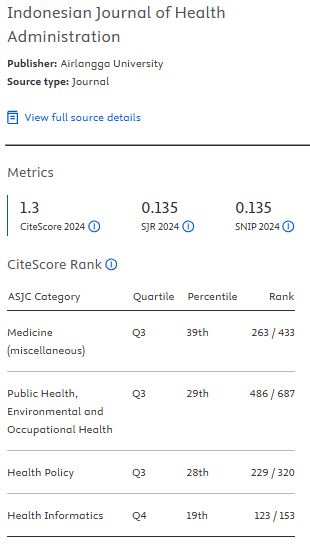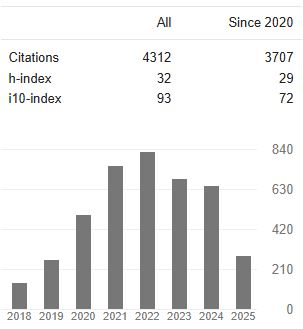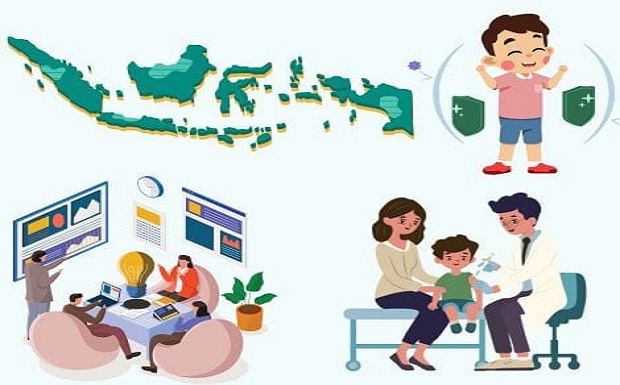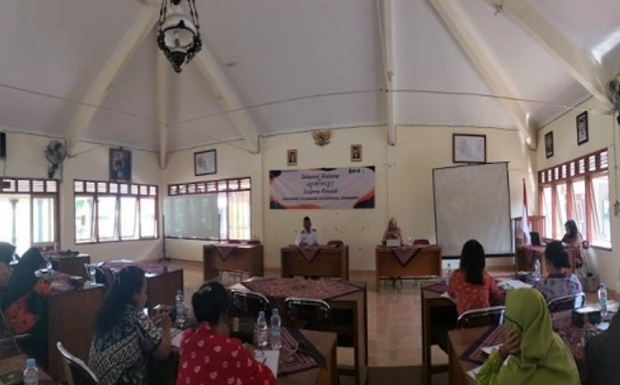COST ANALYSIS OF HOME PHARMACY CARE PROGRAM AMONG DIABETES PATIENTS IN PHARMACY
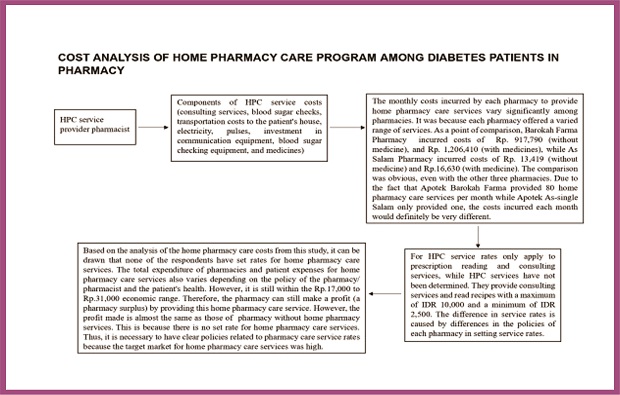
Background: Home pharmacy care is expected to be able to provide a pharmaceutical service that not only reduces the incidence of drug interactions and side effects but also increases the effectiveness of therapy and patient compliance in using drugs.
Aims: The study aimed to analyze the costs incurred for the home pharmacy care program for diabetic patients at the pharmacy.
Methods: This analysis used the independent variable by providing a program of home pharmacy care. The dependent variable was the cost of running the program of home pharmacy care. The sample was the pharmacist in charge of the pharmacies in the Banyumas and Cilacap districts, which provide a home pharmacy care service program. The sample was conducted by purposive sampling method. Sampling was done by direct interviews with pharmacists who signed informed consent. Break Even Point (BEP) was calculated to determine the number of patients who must be served. The pharmacoeconomic analysis used is Cost Analysis using the activity-based costing (ABC) method.
Results: The lowest rate for home pharmacy care services is Rp. 17,000, and the highest is Rp.31,000 without including home pharmacy care services.
Conclusions: Pharmacies continue to benefit from the home pharmacy care program, and there is no provision for home pharmacy care service rates.
Keywords: Activity Based Costing (ABC), Diabetes Mellitus, Home pharmacy care (HPC)
Ahola, A. J. and Groop, P. H. (2018) 'Barriers to self-management of diabetes', Diabetic Medicine, 30(4), pp. 413–420. doi: 10.1111/dme.12115.
Al-Qudah, R. A. et al. (2020) 'Cost-benefit analysis of clinical pharmacist intervention in preventing adverse drug events in the general chronic diseases outpatients', Journal of Evaluation in Clinical Practice, 26(1), pp. 115–124. doi: 10.1111/jep.13209.
Alzubaidi, H., Mc Namara, K. and Versace, V. L. (2018) 'Predictors of effective therapeutic relationships between pharmacists and patients with type 2 diabetes: Comparison between Arabic-speaking and Caucasian English-speaking patients', Research in Social and Administrative Pharmacy. Elsevier, 14(11), pp. 1064–1071. doi: 10.1016/j.sapharm.2017.11.013.
Blakely, T. et al. (2019) 'Health system costs for individual and comorbid noncommunicable diseases: An analysis of publicly funded health events from New Zealand', PLoS Medicine, 16(1), pp. 1–21. doi: 10.1371/journal.pmed.1002716.
Grala, D. T. (2020) 'BEP Break Even Point in practical tasks', (August). doi: 10.13140/RG.2.2.11010.50882.
IDF (2021) International Diabetes Federation Diabetes Atlas 10th edition, International Diabetes Federation. doi: 10.1016/j.diabres.2013.10.013.
Inzucchi, S. E. et al. (2018) 'Management of hyperglycemia in type 2 diabetes: A patient-centered approach', Diabetes Care, 35(6), pp. 1364–1379. doi: 10.2337/dc12-0413.
Janati, A. et al. (2017) 'Health Economic Evaluation of Home and Hospital-Based Care in T2D Patients on Insulin Therapy', Ethiopian journal of health sciences, 27(6), pp. 651–658. doi: 10.4314/ejhs.v27i6.10.
Mulyagustina, M., Wiedyaningsih, C. and Kristina, S. A. (2017) ‘Implementation of Pharmaceutical Care Standard in Jambi City's Pharmacies', JURNAL MANAJEMEN DAN PELAYANAN FARMASI (Journal of Management and Pharmacy Practice), 7(2), p. 83. doi: 10.22146/jmpf.30284.
Najiha, M. R. et al. (2017) ‘Peran Home Pharmacy Care pada Pasien Diabetes Mellitus Tipe II Prolanis terhadap Tingkat Kepatuhan dan Keberhasilan Terapi di BP Sentra Medika Lebaksiu Tegal', Jornal of Tropical Pharmacy and Chemistry, 4(2), pp. 60–65.
Nakagawa, S. and Kume, N. (2017) ‘Pharmacy practice in Japan', Canadian Journal of Hospital Pharmacy, 70(3), pp. 232–242. doi: 10.4212/cjhp.v70i3.1663.
Nurfauzi, Y. et al. (2020) ‘Penilaian Kebutuhan Home Pharmacy Care Untuk Pasien Diabetes Mellitus Tipe 2 Yang Disertai Hipertensi Pada Usia Lanjut', Jurnal Farmasi Indonesia, 17(1), pp. 63–77. doi: 10.31001/jfi.v17i1.768.
Purwonugroho, T. A. et al. (2021) 'Community pharmacist home visit-based intervention improved diabetes patients' outcomes: A randomized controlled trial', Journal of Applied Pharmaceutical Science, 11(3), pp. 054–059. doi: 10.7324/JAPS.2021.110306.
Rosli, M. R. et al. (2021) 'Economic evaluation of home medication review by community pharmacists (HMR-CP) for patients with type 2 diabetes mellitus (T2DM)', Journal of Medical Economics. Taylor & Francis, 24(1), pp. 730–740. doi: 10.1080/13696998.2021.1889573.
Saeedi, P. et al. (2019) 'Global and regional diabetes prevalence estimates for 2019 and projections for 2030 and 2045: Results from the International Diabetes Federation Diabetes Atlas, 9th edition', Diabetes Research and Clinical Practice. Elsevier Ireland Ltd, 157, p. 107843. doi: 10.1016/j.diabres.2019.107843.
Saibi, Y., Romadhon, R. and Nasir, N. M. (2020) 'The Compliance On Their Medication Of Type 2 Diabetes Mellitus Patients In The Public Health Center In East Jakarta', Jurnal Farmasi Galenika (Galenika Journal of Pharmacy) (e-Journal), 6(1), pp. 94–103. doi: 10.22487/j24428744.2020.v6.i1.15002.
Seston, E. M. et al. (2020) 'Supporting patients with long-term conditions in the community: Evaluation of the Greater Manchester Community Pharmacy Care Plan Service', Health and Social Care in the Community, 28(5), pp. 1671–1687. doi: 10.1111/hsc.12992.
Soewondo, P. et al. (2017) 'Outcomes on control and complications of type 2 diabetic patients in Indonesia', Medical Journal of Indonesia, 19(4), pp. 235–44.
Twigg, M. J. et al. (2019) 'The pharmacy care plan service: Evaluation and estimate of cost-effectiveness', Research in Social and Administrative Pharmacy. Elsevier Inc., 15(1), pp. 84–92. doi: 10.1016/j.sapharm.2018.03.062.
Venturini, C. D. et al. (2017) 'Gender differences, polypharmacy, and potential pharmacological interactions in the elderly', Clinics, 66(11), pp. 1867–1872. doi: 10.1590/S1807-59322011001100004.
Wang, Y., Yeo, Q. Q. and Ko, Y. (2018) 'Economic evaluations of pharmacist-managed services in people with diabetes mellitus: A systematic review', Diabetic Medicine, 33(4), pp. 421–427. doi: 10.1111/dme.12976.
Copyright (c) 2023 Kiftiatin Nur Halisa, Didik Setiawan, Galar Sigit Prasuma

This work is licensed under a Creative Commons Attribution-ShareAlike 4.0 International License.
1. As an author you (or your employer or institution) may do the following:
- make copies (print or electronic) of the article for your own personal use, including for your own classroom teaching use;
- make copies and distribute such copies (including through e-mail) of the article to research colleagues, for the personal use by such colleagues (but not commercially or systematically, e.g. via an e-mail list or list server);
- present the article at a meeting or conference and to distribute copies of the article to the delegates attending such meeting;
- for your employer, if the article is a ‘work for hire', made within the scope of your employment, your employer may use all or part of the information in the article for other intra-company use (e.g. training);
- retain patent and trademark rights and rights to any process, procedure, or article of manufacture described in the article;
- include the article in full or in part in a thesis or dissertation (provided that this is not to be published commercially);
- use the article or any part thereof in a printed compilation of your works, such as collected writings or lecture notes (subsequent to publication of the article in the journal); and prepare other derivative works, to extend the article into book-length form, or to otherwise re-use portions or excerpts in other works, with full acknowledgement of its original publication in the journal;
- may reproduce or authorize others to reproduce the article, material extracted from the article, or derivative works for the author's personal use or for company use, provided that the source and the copyright notice are indicated.
All copies, print or electronic, or other use of the paper or article must include the appropriate bibliographic citation for the article's publication in the journal.
2. Requests from third parties
Although authors are permitted to re-use all or portions of the article in other works, this does not include granting third-party requests for reprinting, republishing, or other types of re-use.
3. Author Online Use
- Personal Servers. Authors and/or their employers shall have the right to post the accepted version of articles pre-print version of the article, or revised personal version of the final text of the article (to reflect changes made in the peer review and editing process) on their own personal servers or the servers of their institutions or employers without permission from JAKI;
- Classroom or Internal Training Use. An author is expressly permitted to post any portion of the accepted version of his/her own articles on the author's personal web site or the servers of the author's institution or company in connection with the author's teaching, training, or work responsibilities, provided that the appropriate copyright, credit, and reuse notices appear prominently with the posted material. Examples of permitted uses are lecture materials, course packs, e-reserves, conference presentations, or in-house training courses;


